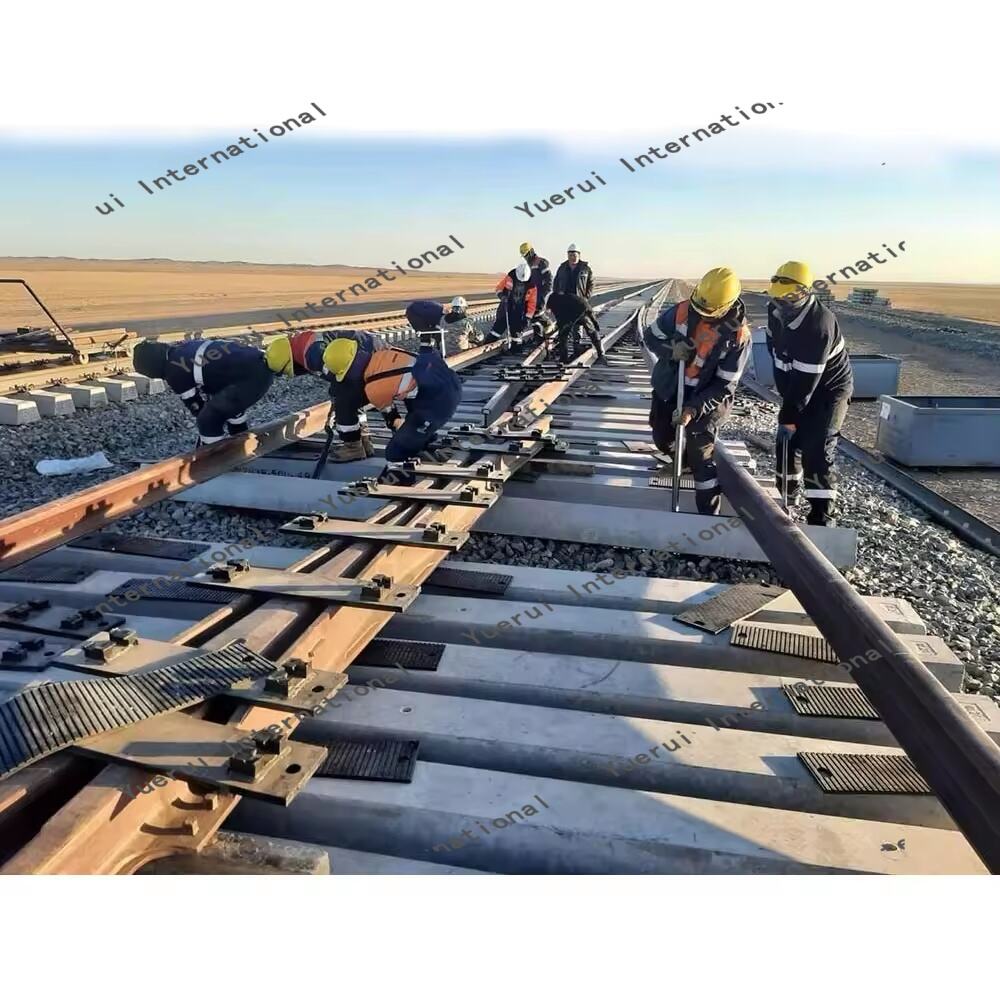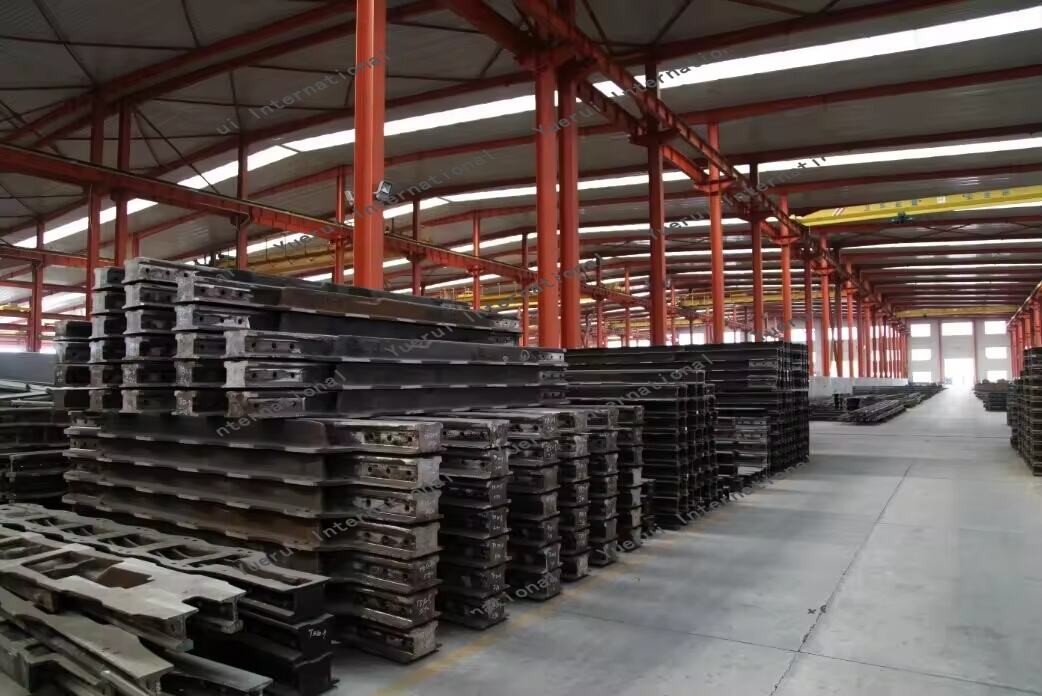The Critical Role of Track Gauge Measurement Tools
Railway construction stands as one of the most precise engineering endeavors in modern infrastructure development. At the heart of this precision lies the fundamental component known as gauge rods, which serve as the cornerstone of accurate track installation and maintenance. These essential tools ensure the consistent spacing between rails that keeps trains running safely and efficiently across thousands of miles of track worldwide.
The railway industry's reliance on gauge rods dates back to the earliest days of rail transport, yet their importance has only grown with the advancement of high-speed rail systems and increasingly complex rail networks. Modern gauge rods combine traditional principles with innovative materials and designs, making them indispensable in both new construction and ongoing maintenance operations.
Understanding Railway Track Gauge Fundamentals
The Physics Behind Track Gauge Standards
Track gauge, the precise distance between the inner edges of rails, represents a critical measurement that directly impacts train stability and safety. Gauge rods provide the exact reference point needed to maintain this crucial spacing, typically 1,435mm (4 feet 8.5 inches) for standard gauge railways. This standardization ensures interoperability across rail networks and optimal performance under varying load conditions.
The physical principles governing track gauge involve complex interactions between wheel profiles, rail geometry, and dynamic forces during train operation. Gauge rods help engineers account for these factors by providing reliable measurement references during installation and maintenance procedures.
Historical Development of Measurement Tools
The evolution of gauge rods parallels the development of railway technology itself. Early wooden measurement tools have given way to sophisticated steel and composite materials, offering enhanced durability and precision. This progression reflects the increasing demands for accuracy in modern railway construction and maintenance.
Throughout railway history, gauge rods have adapted to meet the challenges of different track configurations and operating conditions. Their design has been refined to accommodate various gauge standards worldwide while maintaining the fundamental principle of accurate measurement.
Technical Specifications and Applications
Material Composition and Design Features
Modern gauge rods typically feature high-grade steel construction, ensuring durability under frequent use and varying weather conditions. Their design incorporates precise calibration marks and often includes adjustable components for different measurement requirements. Anti-corrosion coatings and ergonomic handles enhance their practicality in field operations.
Advanced gauge rods may include digital measurement capabilities, integrating electronic sensors and displays for enhanced accuracy. These features complement traditional mechanical designs, offering railway workers both reliability and technological advancement in their measurement tools.
Implementation in Construction Projects
During railway construction, gauge rods play a vital role in multiple phases of track laying. From initial alignment to final inspection, these tools ensure consistent gauge measurement across entire rail sections. Construction teams rely on gauge rods for both straight tracks and curved sections, where maintaining proper gauge becomes increasingly critical.
The implementation process involves systematic checking at regular intervals, particularly at points where track geometry changes. Gauge rods enable workers to make precise adjustments before track panels are permanently secured, preventing costly corrections later.
Maintenance and Safety Implications
Regular Inspection Protocols
Railway maintenance programs heavily depend on gauge rods for routine track inspections. These tools allow maintenance crews to identify and correct gauge deviations before they develop into serious problems. Regular measurements help prevent track degradation and ensure continued compliance with safety standards.
Inspection protocols typically specify measurement frequencies and acceptable tolerance ranges, with gauge rods serving as the primary verification tool. The data collected through these inspections forms a crucial part of track maintenance records and safety documentation.
Safety Standards and Compliance
International railway safety standards mandate regular gauge verification using approved measurement tools. Gauge rods must meet specific calibration requirements and certification standards to be used in official track inspections. This regulatory framework underscores their importance in maintaining railway safety.
Compliance procedures include detailed documentation of gauge measurements and any corrective actions taken. The use of certified gauge rods ensures consistency across different maintenance teams and railway networks, contributing to overall system reliability.

Future Innovations and Trends
Digital Integration and Smart Technology
The future of gauge rods lies in their integration with digital railway management systems. Smart gauge rods equipped with sensors can transmit real-time measurement data to central monitoring systems, enabling predictive maintenance and more efficient track management.
Emerging technologies include automated measurement systems that combine traditional gauge rod principles with advanced electronics. These innovations promise to enhance measurement accuracy while reducing the time required for track inspections.
Sustainability and Environmental Considerations
Modern gauge rod development increasingly focuses on sustainable materials and manufacturing processes. New designs emphasize durability and recyclability while maintaining the high precision required for railway applications. This evolution reflects the industry's broader commitment to environmental responsibility.
Environmental considerations also influence the maintenance practices associated with gauge rods, with newer models designed for easier maintenance and longer service life, reducing waste and replacement frequency.
Frequently Asked Questions
How often should gauge rods be calibrated?
Gauge rods typically require calibration every six months to one year, depending on usage frequency and environmental conditions. Heavy use or exposure to extreme weather may necessitate more frequent calibration to maintain measurement accuracy. Always follow manufacturer specifications and regulatory requirements for calibration intervals.
What makes digital gauge rods different from traditional ones?
Digital gauge rods incorporate electronic sensors and displays for automated measurements, offering greater precision and easier data recording. While traditional mechanical gauge rods rely on visual inspection of calibration marks, digital versions can provide instant readings and often include data logging capabilities for documentation purposes.
Can gauge rods be used on all types of rail tracks?
Most gauge rods are designed for standard gauge railways but specialized versions exist for different track gauges and configurations. Adjustable gauge rods can accommodate multiple standards, while specific models are available for narrow gauge, broad gauge, and specialized rail systems like crane rails or industrial tracks.

